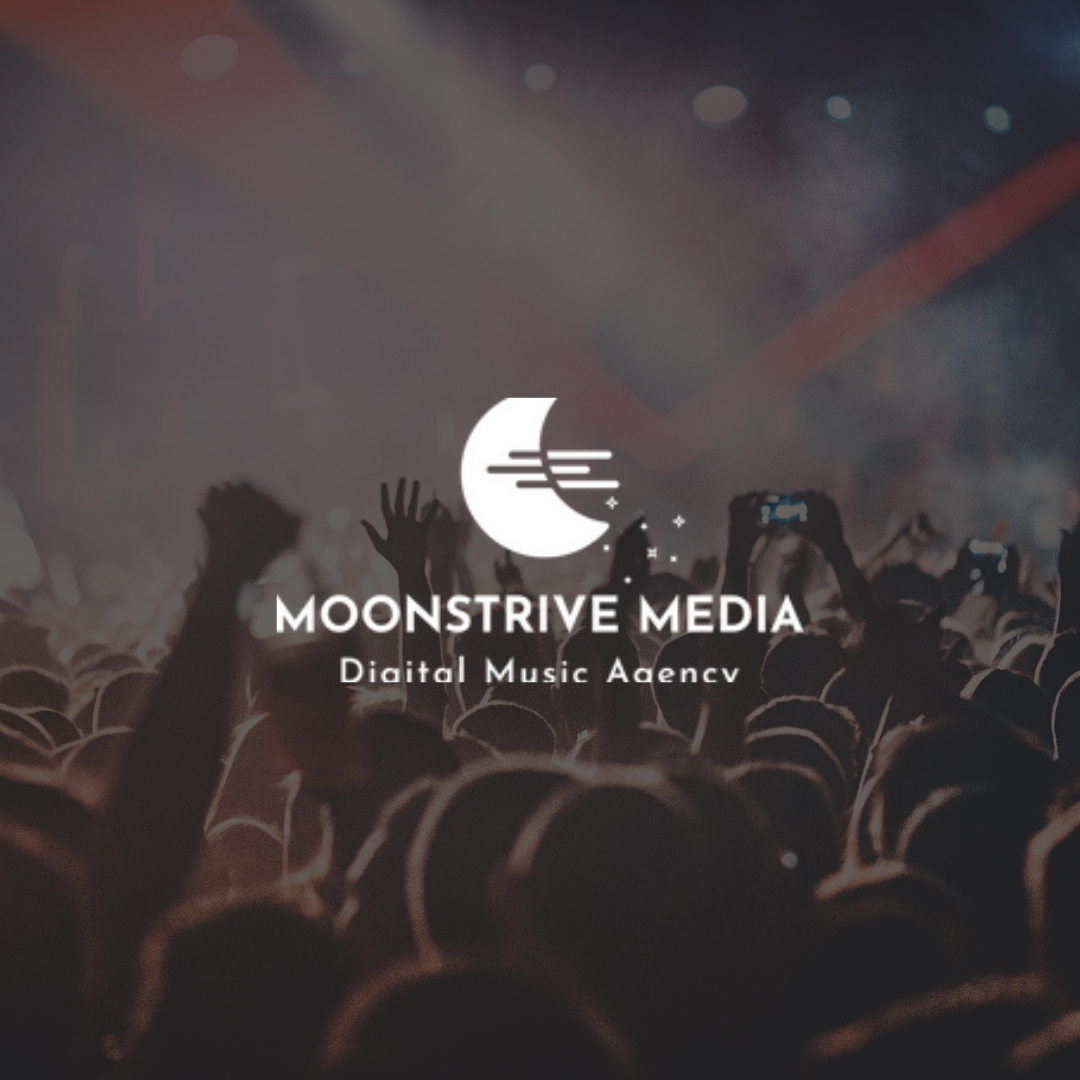If you typed this question into a search bar and you just want to cut to the chase, here’s my quick answer:
Yes, Moonstrive Media is legit.
I ran what their team calls a “250k Playlist Follower Package” and got (so far as I can tell) somewhere in the realm of 25,000 streams. As I’ll discuss in detail below, those were real streams (from real human listeners), garnered through an approach that the Moonstrive Media team terms SEO playlisting.
It’s a legitimate thing.
And, all told, while the campaign was not perfect, it was successful enough that I added Moonstrive to my list of the top Spotify promotion companies. (I’ve tested dozens, and these guys are certainly in the top tier.)
With that said, if you want to give them a shot yourself…
Give Moonstrive Media a try here.
Heads up: That’s an affiliate link, which means that if you click through and decide to give Moonstrive a try, I’ll get a small commission and if you use the code “twostorymedia”, you’ll get a 5% discount on your campaign.
Want more of the details before you spend a few hundred bucks? That’s probably wise.
Over the rest of this article, I’ll lay out the details of the campaign – the backstory, the pros, and the cons – and do my best to help you decide whether Moonstrive Media is worth it for you.
Let’s get into it.
The backstory on my Moonstrive Media campaign
If you’ve stumbled across this site before, you may know that I’ve tried dozens of Spotify playlisting services. Much of the reason for that is because I have a list of promotion companies that ranks pretty well for keywords related to “Spotify promotion,” and so I frequently have companies reaching out and asking if I’ll add them to the list.
I’ll be honest, about half of these inquiries come across as super spammy. But if the company does look legitimate, I usually ask to trial their service. (Because I’ve run enough campaigns to know that playlisting certainly can work.)
The team at Moonstrive immediately caught my attention with a pretty intriguing email:
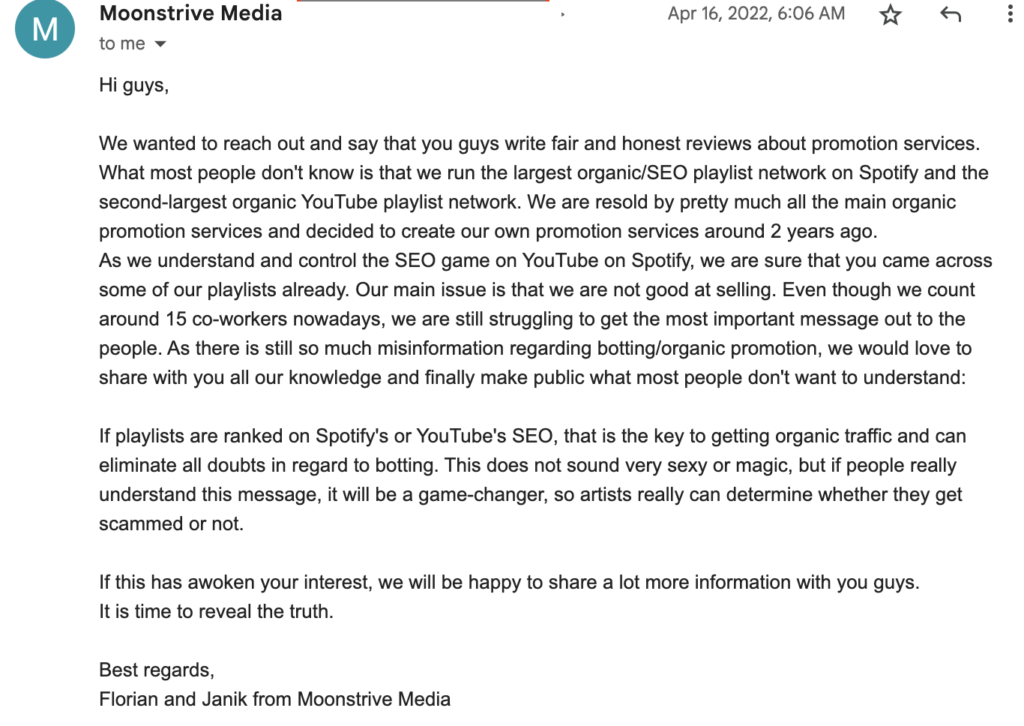
This did “awaken my interest” ha. So I scheduled a call with Janik to hear more, and I came away appreciative of what he had to say.
I’ll try to spell out his approach here…
The basics of Moonstrive’s approach
As I mentioned at the top of this article, Moonstrive are heavy proponents of what they call SEO playlists. Basically, they only work with curators whose lists rank in Spotify’s search results.
Here’s what that looks like for the search term “acoustic road trip”:
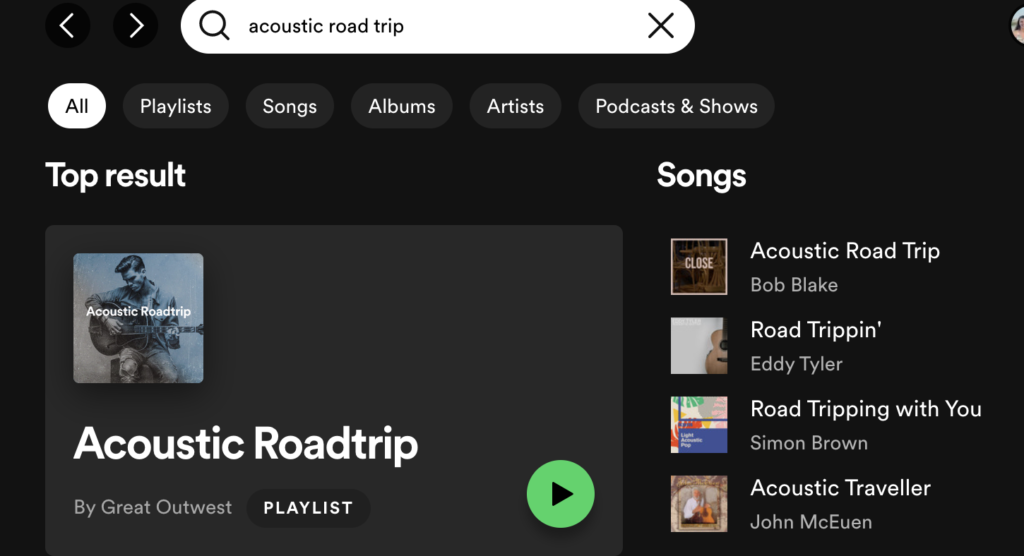
As Janik reiterated on our call, Moonstrive believes that SEO-ranked playlists tend to be the most engaged and are nearly guaranteed to be healthy (i.e., not built with bots). That’s true for two reasons:
- There’s a clear source of legitimate traffic to SEO-built playlists (people searching for them on Spotify).
- Spotify is choosing to show these lists to searchers, which is a sign of algorithmic favor (something that would be unlikely if the list was disengaged or built with bots).
I think that this approach makes a lot of sense (although, as I’ll discuss below, I do think that it comes with its own set of drawbacks), and I’ve heard other good companies, like Indie Music Academy, lay out similar frameworks.
So, I decided to give the Moonstrive Media team a shot, and we jumped into setting up a campaign.
The process of working with Moonstrive Media
First, I want to note that this was a trial campaign, which means that I didn’t pay for it in exchange for the promise of writing a detailed review of my experience. I frequently run campaigns like this, and whenever I do, I try my best (as you’ll see shortly) to maintain an unbiased perspective. But I do want to mention that it was a free trial in order to be as transparent as possible.
The Moonstrive team offered to run a campaign to 250k followers (which means that they promised to get my song placed in playlists totaling at least 250k). If I had paid in full, the cost would’ve been $339.
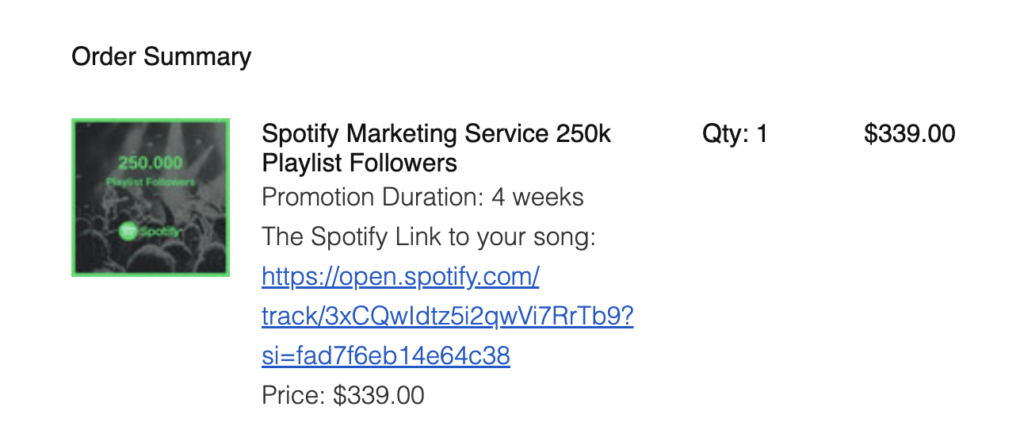
I opted to promote this song:
It’s an indie-pop / singer-songwriter song by my brother. I’m unavoidably biased here, but I think it’s pretty good, and I also think it’s the type of track that should be able to get some decent playlist traction.
The ordering process itself was really straightforward; I just pasted in the link to the track, sent the order through, and then sat back to wait.
The timeframe
Playlist placements started coming in pretty quickly – literally the same day I placed my order. I was emailed a .pdf showing the placements that I received a couple of hours after the order processed. The document noted that I could expect the song to remain on the lists for a period of four weeks. About four weeks later, I received another email noting that my promotional period was ending.
All told, the process was simple and efficient, and it aligned pretty much exactly with what Moonstrive had told me to expect. Pretty smooth, and the team was professional throughout.
That’s important. But let’s be real, that’s not why you’re reading this article. The real question is: Did it work?
Let’s get into that next.
The campaign results
As I teased at the beginning of this article, the streaming numbers themselves were solid. It’s a little bit difficult to parse (because Tom has a fair number of streams from a range of different lists and sources), but it looks like the campaign generated around 25,000 streams.

Those came from a decent selection of playlists (we got 13 placements total), with titles ranging from “Study Playlist” to “Sunday Best”. Here, for example, are the three Moonstrive lists that drove the most streams:
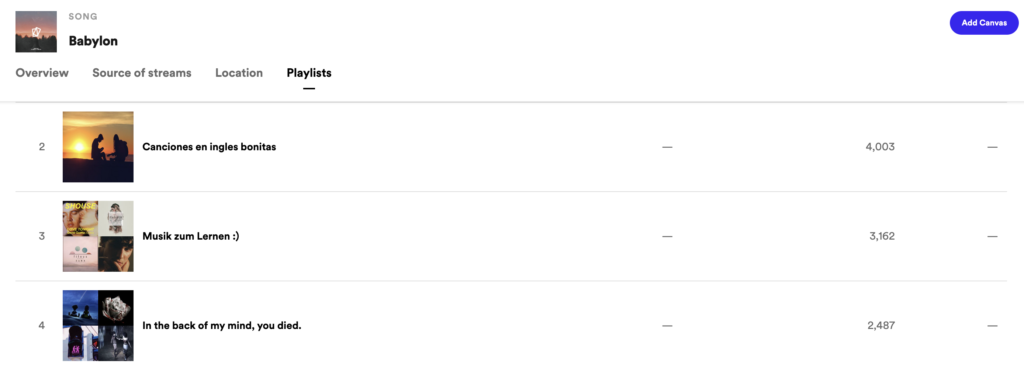
Again, these all appear to be streams from real humans. Listening behavior appears to be normal – there no weird data sources or strange locations that don’t make sense – and the follower growth curve for every list looks something like this:

That’s literally the growth curve for the Canciones en ingles bonitas playlist, and it’s exactly what you want to see from a healthy playlist. Smooth, upward growth like that is proof positive that a list is legit, while spikes (especially downward) are signs of bots.
The lists are engaged and they drove streams. At a fundamental level, that’s what you want from a Spotify playlist promotion campaign, and it’s why I’m confident in saying that Moonstrive Media is legit.
But before I wrap this up, let’s go one layer deeper.
My analysis of the campaign
Let’s break this out into some pros and cons:
The pros of Moonstrive Media
SEO playlists really are healthy and engaged.
This is the key factor in any analysis of Moonstrive: Their lists are SEO-built, which makes them pretty close to bot-proof. If you get on an SEO-built list, you will get streams from real people. That’s how search engines work.
The Moonstrive team is fast, transparent, and professional.
Maybe a simpler way to put this: I really like the Moonstrive Media vibe. Throughout the campaign, Janik and his team were totally available to answer any questions I had – and, maybe even more importantly, they were super transparent every step of the way.
The service is pretty cost-efficient.
For the amount of streams we received, $339 is a pretty solid price point. Some of the other top companies are a bit pricier (especially when you consider that some, like Playlist Push, don’t guarantee results or refunds).
The cons of Moonstrive Media
They rely solely on SEO playlists.
Okay, bear with me here – I know I just listed the health of the company’s playlists as a pro. Here’s why I’m listing it in the con section, too: SEO search terms don’t always align with high-fit genres.
To get an idea of what I mean, scroll back up and take a look at some of the playlists our song was placed in, and pay particular attention to just how broad they are. For example: Canciones en ingles bonitas (which you, as you probably know, means “beautiful songs in English”) could include almost anything. Would a Justin Bieber song fit on there? Sure. Would a classical jazz piece work? Yeah, I guess. Would my brother’s indie pop tune make sense? Apparently, yes.
You can see how this practically plays out if you read Brian Hazard’s excellent review of Moonstrive. Scroll through his results, and you’ll see that his synthwave track was added to the playlist Music zum Lernen 🙂 – and so was our indie-pop track. The list is legit, but the range of genres on it is so wide that the streams it generates are less meaningful.
And that’s the inherent challenge with SEO-built lists: High-volume keywords don’t always track with good genre fits.
Sure, lots of people search for stuff like “beautiful songs in English,” but it’s likely that most of them don’t really know exactly what they want. The way to build long-term Spotify growth as an artist is to generate engaged streams – streams from people who will like your music and listen to it again and again. When you get that type of engagement, Spotify is able to figure out the type of person who will like your music. Then, they can start to find more of them with algorithmic placements.
That long-term algorithmic growth is the goal. And it certainly can happen with SEO playlists; I’ve seen it happen.
But I do think that the genre breadth of SEO-built lists is a legitimate challenge to the model, and I think it’s part of the reason why Tom’s song dipped back to its streaming starting point when the campaign ended. (He’s getting around 50 streams per day for the track, which is about where he was before playlisting.)
Final thoughts on Moonstrive Media
Okay, let’s recap:
Overall, I was impressed with Moonstrive Media. Their focus on SEO-built playlists basically guarantees that their lists are built with real, human listeners. Their team is transparent and professional (Janik is great). And the results, from a pure streams perspective, were undeniably good – while Janik told me that he was a little disappointed with the final tally, the truth is that 25,000+ is on the higher end for what I would’ve expected.
On the other hand, the drawback to Moonstrive’s approach is that their SEO-focus leads to placements on playlists with wide genre representation. There’s nothing inherently wrong with that, but I do think placements like these tend to require a higher level of volume to find engaged fans – you’ve got to go through more people to find the ones who will really like your music. That’s part of the playlisting process, though, and as I keep saying, it’s part of the reason Moonstrive’s lists are healthy in the first place. Everything’s a give and take.
The bottom line is that I do think Moonstrive Media is a legitimate option to drive Spotify streams. If you’re interested in giving them a shot, here’s the link one more time:
Check out Moonstrive Media here.
(Use the code “twostorymedia” to get 5% off.)
And remember: Streams are nice (they represent people hearing your music!), but they aren’t everything. Whether you decide to try playlisting or not, here’s hoping that you find encouragement as you work on promoting your music.
It’s a grind, but music is meaningful – and that makes it worth it.
Good luck out there.

